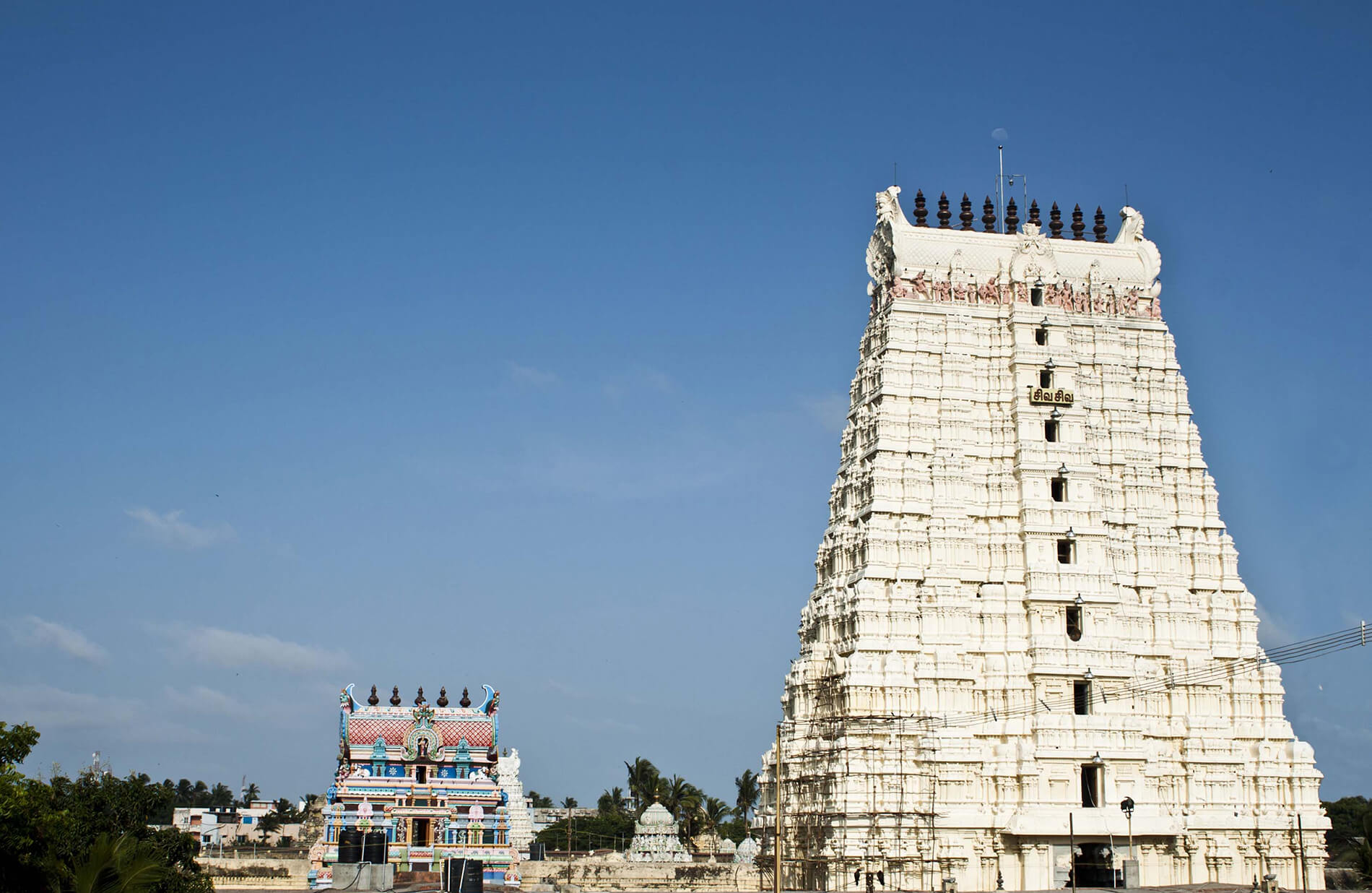
The Ramayana Trail
Walk in the footsteps of Lord Rama
Rameswaram is renowned as one of the holiest pilgrimage destinations in India. It is home to the iconic Ramanathaswamy Temple, dedicated to Lord Shiva. The temple is believed to be one of the twelve Jyotirlinga shrines, making it a significant site for Hindu devotees. Rameswaram is also a Chaar Dham, one of the holy abodes of Lord Vishnu. The town is also associated with the epic Ramayana, with many sites linked to Lord Rama’s journey to rescue his wife Sita. Given below are the places Lord Rama visited as per sage Valmiki’s Ramayana and by visiting them you will be walking in Lord Rama’s footsteps and exploring a trail that goes back millenniums!
The Ramanathaswamy Temple
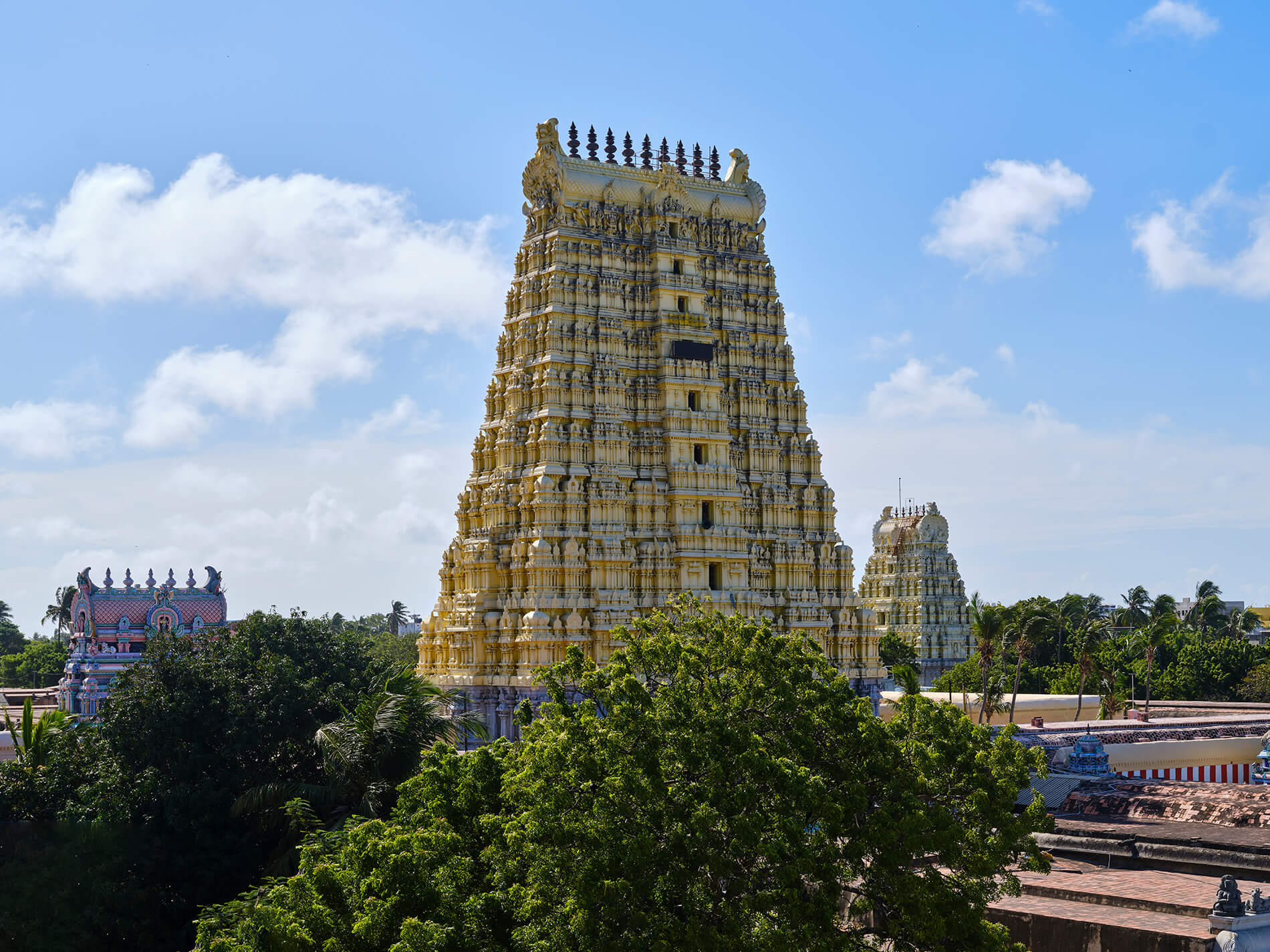
The Ramanathasway Temple is the main shrine of Rameswaram. It is one of the greatest temples in India.
The story of the temple dates back to the time when the war in Lanka was over and Rama decides to perform a yagna for Lord Shiva. It is said that at this site, an avatar of Lord Vishnu worshipped Lord Shiva. The temple stands on the sites of the antyeshti and prayaschittya yagnas of Rama.
The Skanda Purana says that the yagna took place in the month of Jyeshtha- Tamil month of Ani; shukla paksha, dasam tithi. For the yagna Rama needed a shiva lingam and sent Hanuman to Mount Kailash to fetch a crystal lingam. However, Hanuman failed to return by the auspicious hour and therefore Sita created a lingam with sand. This is the Ramanatha lingam and Shiva was worshipped as Ramanatha, Lord of Rama.
When Hanuman came back he was deeply disappointed. So Rama decreed that both the lingams would be installed together. Hanuman’s lingam was named Vishwa lingam, and Rama decreed that the Vishwa lingam will always be worshipped first.
Today the majestic Ramanathaswamy Temple with two lingams in the garbha griha, stands at the site of this yagna. The temple has two more lingams, one of which is behind the 16ft tall statue of Hanuman. The present temple was built three centuries ago and is considered one of the finest examples of Dravidian architecture. It has the longest temple corridor in India with 1,212 pillars carved with exquisite images. There are 22 holy Teerthams or tanks/wells within the temple precincts where pilgrims bathe before their offerings.
Agniteertham

Rama took a bath here before the yagna to worship Lord Shiva. Pilgrims bathe in this beach to purify themselves before heading for the Ramanathaswamy Temple. Agnitheertham is a pilgrim place which stands out for the belief that bathing in the place will wash the sins away.
Gandhamadan Parvatam Temple

The Gandhamadana Parvatam in Rameshwaram is one of the popular tourist destinations.
Legend mentions that Hanuman leaped from this hillock to reach the Lanka kingdom. The double storied Mandapam has the imprinted footprints of Lord Rama on the Chakra. The hillock is thronged by devotees of Lord Rama. The temple is the also called Ram Jharokha.
The hillock is situated at a distance of 3 kms from the Ramanathaswamy Temple and Gandhamadana Parvatam is the highest point in the island of Rameshwaram. Close to this temple is Sakshi Hanuman Mandir where Hanuman gave Lord Rama, the ring that Sita had given him in the Ashok Vatika, Lanka.
Jata Teertham
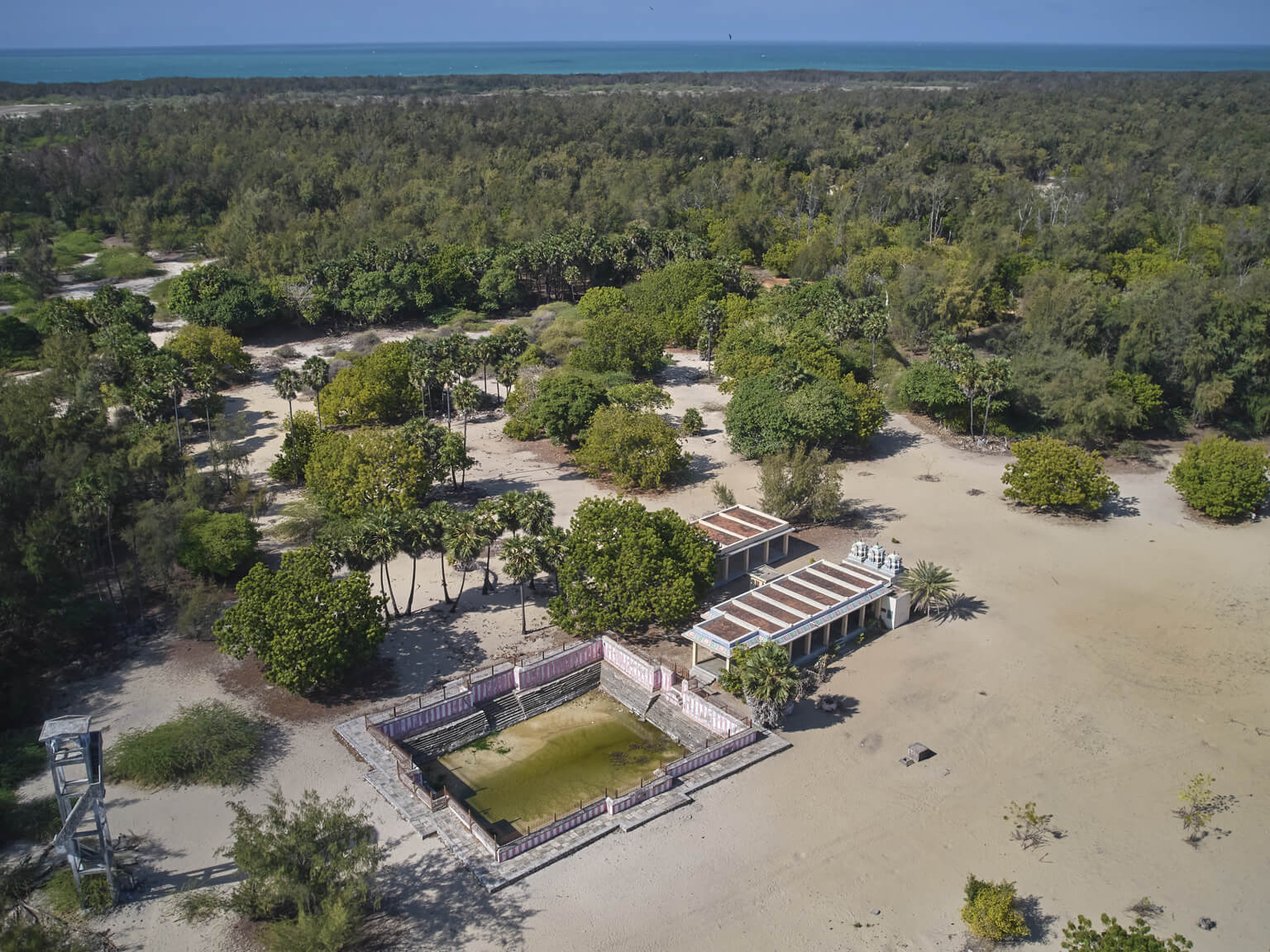
This sacred tank, in the forest, stands on the way from Rameswaram to Dhanushkodi. Rama washed his jatta, i.e. his long hair here.
Dhanushkodi
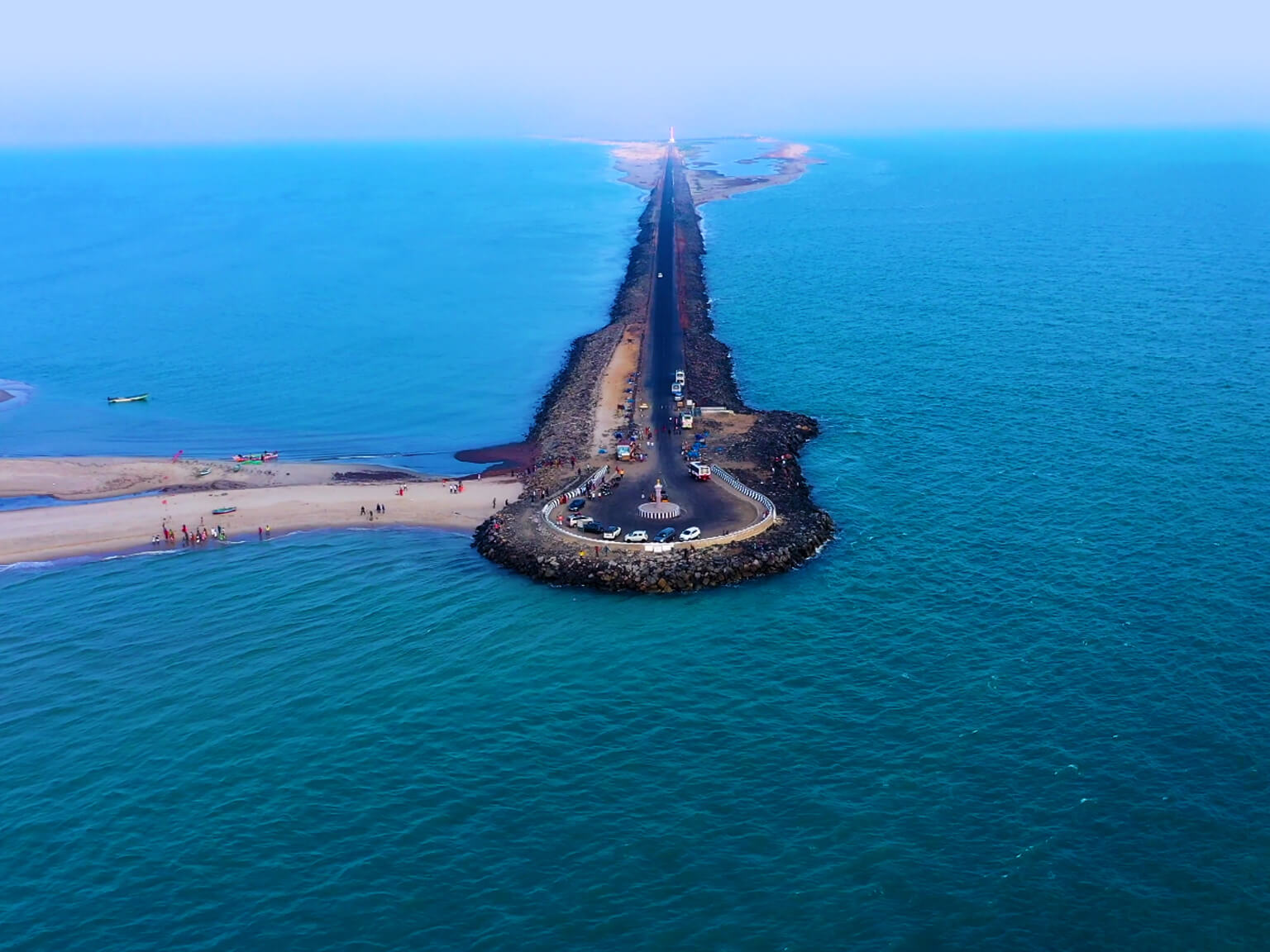
This is the site of a sacred confluence of waters as the water of the Indian Ocean and the Bay of Bengal meet here, and it is also the site of the final bridge to Lanka.
Hindu scriptures mention that on the request of Vibhishana, brother of Ravana, Rama broke the Sethu with one end of his bow and hence the name Dhanushkodi, Dhanush meaning bow and Kodi stands for end. A series of rocks and islets found in a line are remnants of the ancient Sethu also known as Rama’s Bridge.
Most of Dhanushkodi was destroyed by a cyclone in 1964. In those days Dhanushkodi had a railway station, a small railway hospital, a higher secondary school, a post office, customs and port offices. Swami Vivekananda visited Dhanushkodi on his return from his triumphant visit to the Parliament of Religions held in United States in September 1893. He set foot on Indian soil on this island after travelling from Colombo in January 1897.
Kodandarama Swamy Temple
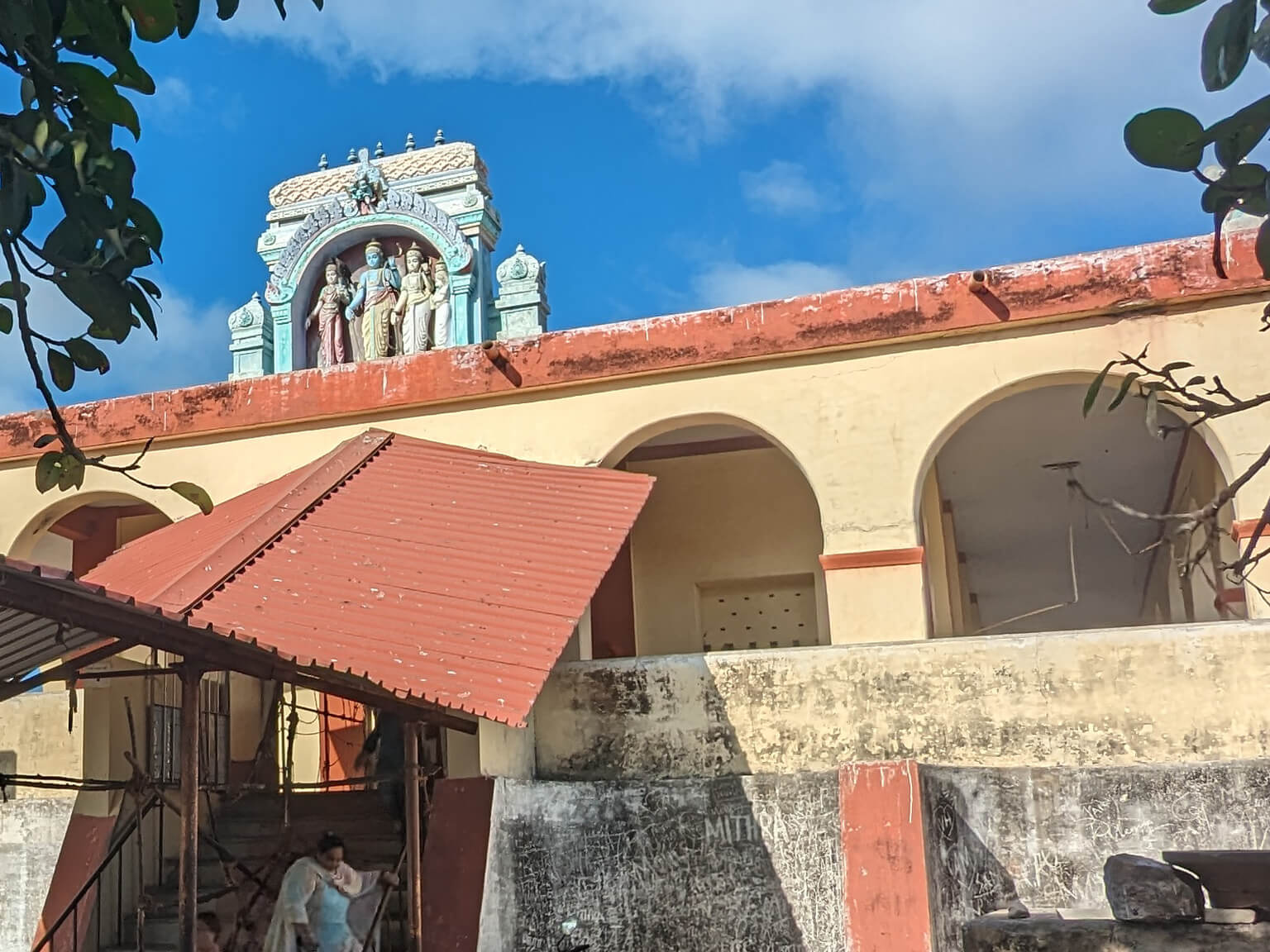
Kodandaramaswamy Temple is situated in the southernmost tip of India on the Bay of Bengal and is surrounded by Indian Ocean from all sides. This region has been ravaged by cyclones and the original temple is believed to be underground. However, a new temple has been constructed over it. Here, Vibhishana, Ravana’s brother joined hands with Rama. Later, he was crowned the king of Lanka here and hence Vibhishana too is worshipped at the temple.
Villundi Theertha Thangachimadam

One day when Sita was thirsty, Rama created a sweet water spring here by aiming an arrow. The well is located in the sea and still contains sweet water. It is considered to be a sacred place by most of the followers of Lord Rama. It is about 7 kms from Rameshwaram temple.
Rama Temple Thangachimadam
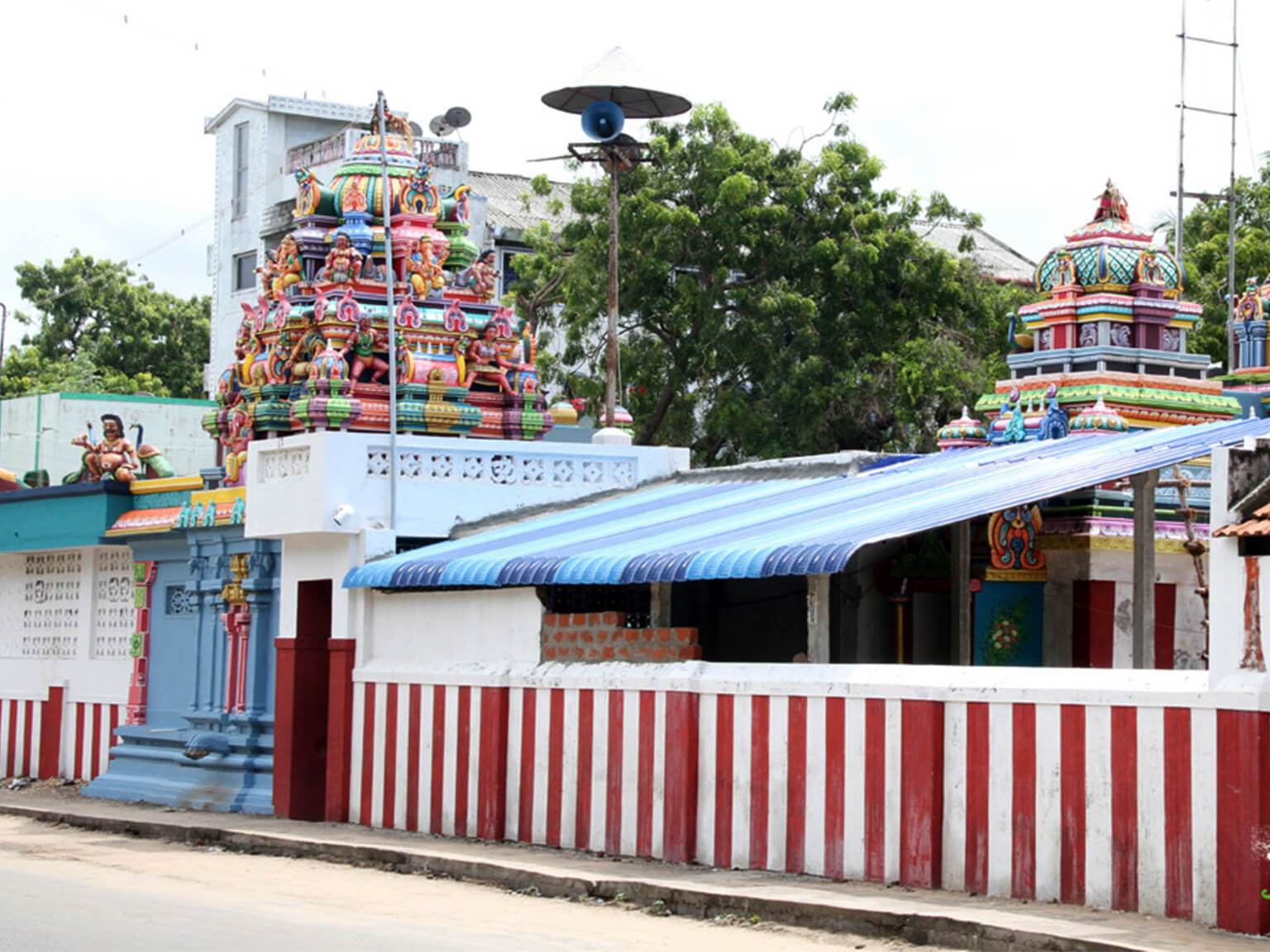
The temple marks the site where Rama held a discussion with his ministers before the battle with Ravan in Lanka.
Sakshi Hanuman Temple
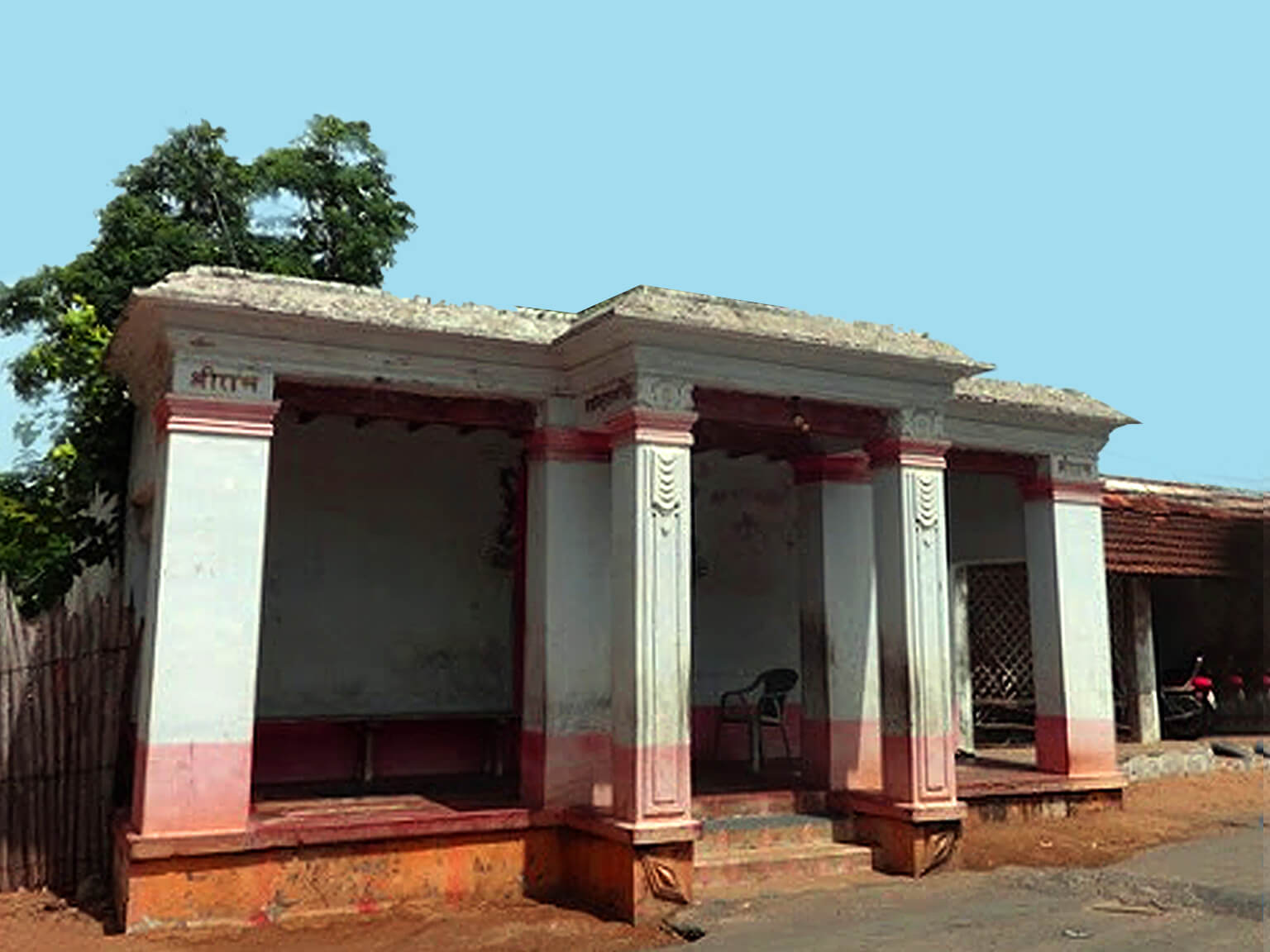
The Sakshi Hanuman Temple is a renowned Hindu temple dedicated to Lord Hanuman located in Rameswaram, Tamil Nadu. When Lord Hanuman met Devi Sita in Lamka he gave the ring given by Lord Rama to her and in return gave the jewellery given by Devi Sita to Lord Rama at the spot where the Sakshi Hanuman temple is now located. The term “Sakshi” means “witness” in English, and the temple is named so because Lord Hanuman was witness to Devi Sita being alive.
Navagraha Temple, Devipattinam

Lord Rama worshipped the Goddess Durga and the nine planets here, praying for victory in the battle against Ravana. Lord Rama placed nine stones upright in the shallow bay and worshipped them, hence the name of the site – Navabashanam, the nine sacred stones.
Navabashanam, a coastal village, is located 70 km from Rameswaram. It has a temple dedicated to Devi who is said to have killed the demon Mahishasura at this spot. It is said that Rama calmed the sea at this coastal village to install nine stones representing the Navagrahas. These stones can still be seen partly submerged in the water close to the beach near a bathing place of the Thilakeshwar Temple or the Navagraha Temple.
Hindus perform religious rites for their forefathers here and a large number of devotees visit the ancient Thilakeshwar Temple, popularly known as Navagraha Temple at Devipattinam. The Thilakeshwar Temple is dedicated to Shiva and Parvati. Shiva here is known as Thilakeswar and the Goddess is known as Soundaryanayaki. The shrine has a beautiful image of an eight-armed Durga with weapons. Devotees at the temple offer nine varieties of grains including paddy, wheat, pulses and other things to the Gods and Goddesses.
History of Navabashanam Temple – Devipattinam
According to the legend, Devi Mahishasuramardini appeared in Lord Rama’s dream and directed him to visit Devipattinam to worship the nine planets or Navagrahas and relieve himself from the misery. The Devi told Rama that he was suffering from misfortune due to adverse planetary conditions. Rama was heading towards Ravana’s Lanka to save Sita from his wrath. After performing a special prayer dedicated to Lord Vinayaka in Uppur, he went to Devipattinam for Navagrahas offerings.
When Rama came to Devipattinam he did not find any shrine dedicated to nine planets. He made statues of nine planets out of the ocean’s sand. It is also believed that while Rama was creating the Navapashanas (Navagrahas), Lord Jagannatha calmed down the ocean so that he could perform his puja without any disturbance. Hence, the place is known as Navabashanam spot and the nine stones represent nine planets.
Since that day Devipattinam is regarded as a place where a person can get relief from adverse planetary conditions by performing the appropriate rituals. This Navagraha temple in the midst of the sea has been a divine wonder since ancient days.
Setu Chhedukarai

A place of Puranic importance, Sethu karai, means the Sethu Coast. The first foundation of a sea bridge to Lanka was laid here and the remains of the Rama Sethu or Rama’s bridge can still be seen here. The Government has banned people from going to the exact spot, which is a little distant away from the spot you are visiting. The final bridge was built at Dhanuskodi.
Tapnashan Vinayak Temple-Uppur (Lord Ganesha temple)

Mythology says that king Daksha expected Lord Shiva, who married his daughter Dakshayani, to obey him. With a view to humiliate Shiva, Lord Daksha organized a great Yagna and invited all in the celestial world including rishis except Shiva. Exasperated by her father’s behaviour Lord Shiva, Dakshyani interrupted the Yagna. Lord Daksha, angry at her misconduct insulted his daughter for which Dakshyani sent Veerabadra to destroy Daksha’s yagna.
Surya, the Sun god was among the participants in the Yagna and was punished and he came to Earth to seek a remedy for his folly. He visited Vannimandharavanam on the Devipuram, Kalipuram, Tirupunavayil and other places on the eastern coast and performed penance before Lord Vinayaka. Pleased with Surya’s penance, Lord Vinayaka freed him from the sins he had accrued. Lord Vinayaka also granted Surya the boon that his rays would fall on Him when he worships. Lord Vinayaka accepted Sun’s rays on him (sun rays – veyil in Tamil) therefore, he is named Veyil Ugantha Vinayaka.
When Lord Rama and Lakshman were exhausted by the heat, they bathed here and worshipped Lord Ganesha. When Sri Rama came to know about the place of captivity of Sita through Anjaneya, he set out from Prachravana hills with His monkey army to the Vanni forests through the eastern coast. He worshipped Veyil Ugantha Vinayaka in a serene environment and sought his blessings for victory in his efforts and proceeded towards Sethukarai.
Though stories differ, it is believed that the temple was built by King Bhaskara Sethupathi in the year 1905.
Darbha Shayanam Temple, Tirupullani

Here Lord Rama meditated, lying on a bed of grass praying to Lord Varuna, God of the Oceans, requesting the sea to move away. When Varuna refused, an angry Rama picked up his bow swearing he would dry up the waters, at which Varuna promised to support the bridge built by Vanar Sena- the monkey army. Rama also worshipped Vishnu at the Adi Jaganatha temple here who presented Rama with a celestial bow called Divya sarabham.
Rama returned here with Sita after his coronation to perform a yagna. Now there is a shrine called Pattabhishekaha rama in the temple precincts to commemorate for the occasion. The Tamil name Thirupullani is made out of Thiru-pull-ani thereby meaning a bed made of grass.
History of the Darbhashayanam Temple
Thousands of centuries ago, three maharishis, Pullavar, Kalavar and Kannavar performed severe penance sitting on the Darba grass. Soon Lord Maha Vishnu appeared in the form of an Arasu tree and though they were happy to view the Lord in this form, they begged Him to show them His natural form. The Lord obliged and appeared as Adhi Jagannatha Perumal. This is the present site of Thirupullani. It is here that king Dasaratha received the Puthra Bhagya Mahamantra and was blessed with his son Rama.
Thirupullani has the special distinction of having been visited by Rama twice, before going to and while returning from Lanka. It was in this place that he is believed to have reclined in meditation for three days, invoking Varuna.
Teerthanda Dhanam

During their search for Sita, Lord Rama and Lakshmana felt thirsty. Lord Rama prayed to Lord Varuna (God of Ocean) for water and Varuna appeared and offered him water. Meanwhile the sage Agasthya muni, who was worshipping Viruthapureeswarar in Thiruppunavasal, came to know about Lord Rama’s arrival and went to see him. Lord Rama told him that he was in search of his wife Sita, who had been abducted by Ravana, and asked the rishi for advice on how to get her back. Agasthya Muni advised Lord Rama that since King Ravana was a sincere and ardent devotee of Lord Shiva, Lord Rama should pray to Lord Shiva to gain the special powers required to defeat Ravana in battle.
Obeying Agasthya Muni, Lord Rama did “Pitru Tharpana” or Pirru puja, for his ancestors (King Dashratha) by the sea side. The rishi asked him to pray to Viruthapuraaswarar, another form of Lord Shiva in Tiruppunvasal. In spite of being an avatar of Lord Vishnu, Lord Rama offered his prayers as Lord Shiva’s devotee (removing the Rama tilak from his forehead). Legend says that this is the first place where Rama turned into a Shiva devotee.
Lord Shiva appeared at the puja and assured Lord Rama that he will emerge victorious in the battle against Ravana. During this puja, Lord Varuna requested Lord Shiva for three boons.
- Usually all Shiva temples are east facing. But the idol in Teertandadhanam should be west facing as Thirupunnavasal is facing east. Hence, the two temples should be facing each other.
- As Rama bathed in the holy water (Theertham), the place should be named as Theerthanda dhanam.
- Any devotee bathing in the ocean and performing pooja at the temple, will obtain the effect equivalent to holy dips taken in 66000 Teerthams throughout the world.
The Shiva lingam in this temple is believed to be over 3000 years old (as told to us by the current priest).

